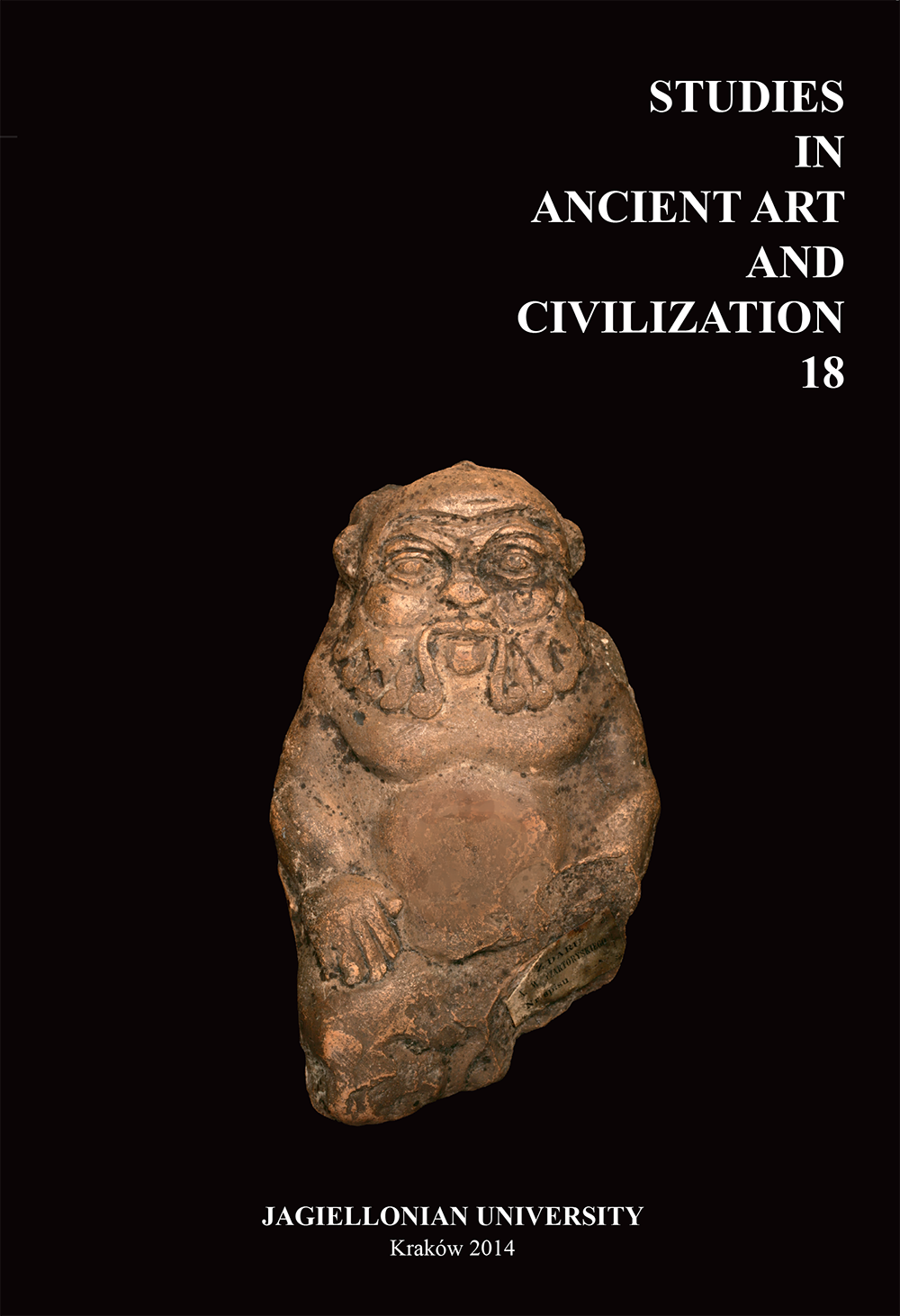The Origins and Development of the Definite Article in Egyptian-Coptic
DOI:
https://doi.org/10.12797/SAAC.18.2014.18.14Keywords:
definiteness, definite, indefinite and zero article, noun categories, specific and generic nouns, Egyptian-Coptic, northern Egyptian dialect, diachrony and linguistic topologyAbstract
The first appearance of the emphatic demonstratives pA/tA/nA in northern Egyptian letters of the 6th Dynasty and their absence from southern Egyptian sources indicates the growing difference between the language variants spoken in these broadly defined regions. Originating from the Old Egyptian pronominal stems p-/t-/n-, the use of these new demonstratives expands rapidly during the Middle Kingdom. In their weak form as definite articles, they indicate that a noun is knownin discourse and thus signal a hitherto hidden grammatical category – definiteness. Once the definite article is grammaticalised and starts to be used with a priori definite nouns such as pA nTr wa ‘the sole god’ or pA HqA ‘the ruler’ (18th Dynasty), the indefinite article appears. The further development in Demotic and Coptic shows that the article was on the way to becoming a noun marker. When attached to a relative phrase, it created a new noun, which could be further determined (xenpetnanouf ‘some good deeds’, ppetouaab ‘the saint’). The following article traces the regional origins of the definite article as well as the main principles governing their development.
References
Allen J. P. 2002. The Heqanakht Papyri. New York.
Blackman A. M. 1988. The Story of King Kheops and the Magicians: Transcribed from Papyrus Westcar (Berlin Papyrus 3033). Reading.
Brose M. 2014. Grammatik der dokumentarischen Texte des Mittleren Reiches. Widmaier.
Bussmann H. and Gerstner-Link C. 2008. Lexikon der Sprachwissenschaft. Stuttgart.
Černý J. 1975. A Late Egyptian Grammar. Rome.
Černý J. 1976. Coptic Etymological Dictionary. Cambridge.
Eichler E. 1991. Untersuchungen zu den Königsbriefen des Alten Reiches. SAK 18, 141-171.
Ernstedt P. V. 1986. Issledovaniâ po grammatike koptskogo âzyka. Moscow.
Gardiner A. H. 1927. An administrative letter of protest. JEA 13, 75-78. DOI: https://doi.org/10.1177/030751332701300111
Gardiner A. H. 1930. A new letter to the dead. JEA 16, 19-22. DOI: https://doi.org/10.1177/030751333001600105
Gardiner A. H. 1963. The Theory of Speech and Language. Oxford.
Gardiner A. H. and Sethe K. 1928. Egyptian Letters to the Dead. London.
Glanville S. R. K. 1928. The letters of Aaḥmōse of Peniati. JEA 14, 294-312. DOI: https://doi.org/10.1177/030751332801400159
Glanville S. R. K. 1955. The Instructions of Onchsheshonqy (British Museum Papyrus 10508). London.
Greenberg J. H. 1978. How does a language acquire gender markers. In J. H. Greenberg and E. S. Andersen (eds), Universals of Human Language. Stanford, vol. 4, 47-82.
Grimm H.-J. 1987. Lexikon zum Artikelgebrauch. Leipzig.
Jansen-Winkeln K. 2011. Sprachgeschichte und Textdatierung. SAK 40, 155-179.
Johnson J. H. 1986. Thus Wrote ‘Onchsheshonqy: an Introductory Grammar of Demotic. Chicago.
Junker H. 1938. Gîza. Bericht über die von der Akademie der Wissenschaften in Wien auf gemeinsame Kosten mit Dr. Wilhelm Pelizaeus unternommenen Grabungen auf dem Friedhof des Alten Reiches bei den Pyramiden von Gîza. Wien.
Kroeber B. 1970. Die Neuägyptizismen vor der Amarnazeit. Tübingen.
Layton B. 2004. A Coptic Grammar: with Chrestomathy and Glossary: Sahidic Dialect. Wiesbaden. (2nd ed., rev. and expanded with an index of citations).
Lexa F. 1926. Papyrus Insinger, les enseignements moraux d’un scribe égyptien du premier siècle après J. C. Paris.
Parkinson R. B. 1991. The Tale of the Eloquent Peasant. Oxford. DOI: https://doi.org/10.2307/3822070
Peet T. E. 1923. The Rhind Mathematical Papyrus, British Museum 10057 and 10058. Liverpool. DOI: https://doi.org/10.2307/3604675
Posener-Kriéger P. 1968. The Abu Sir Papyri. London.
Roccati A. 1968. Una lettera inedita dell’Antico Regno. JEA 54, 14-22. DOI: https://doi.org/10.1177/030751336805400105
Säve-Söderbergh T. 1994. The Old Kingdom Cemetery at Hamra Dom (El-Qasr wa es-Saiyad). Stockholm.
Sethe K. 1960. Ägyptische Lesestücke zum Gebrauch im akademischen Unterricht. Hildesheim.
Smither P. C. 1942. An Old Kingdom letter concerning the crimes of count Sabni. JEA 28, 16-19. DOI: https://doi.org/10.2307/3855518
Smither P. C. 1945. The Semnah despatches. JEA 31, 3-10. DOI: https://doi.org/10.1177/030751334503100102
Spiegelberg W. 1925. Demotische Grammatik. Heidelberg.
Till W. C. 1955. Koptische Grammatik. Leipzig.






